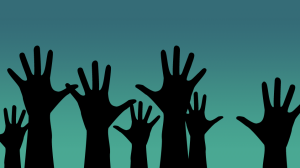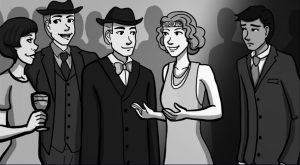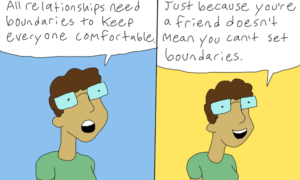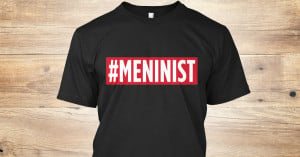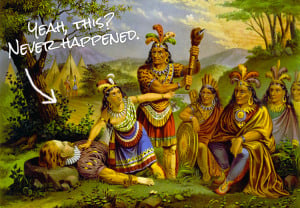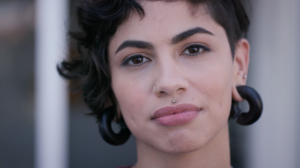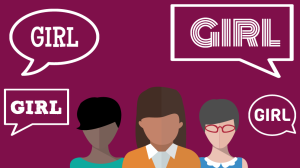Feminism is, at its heart, about achieving equality for women and girls around the globe. But if the feminist movement wants to change the world, it’s going to take actual inclusivity to make it happen.
In this article, I’m going to offer strategies for inclusive feminist leadership and organizing based on lessons I learned while running my college’s feminist organization.
The feminist movement has long been fraught with divides along lines of class, race, sexuality, and more.
What we’ve learned throughout this movement’s history is that a feminism that serves only the most affluent, socially accepted, and privileged women within it will ultimately fail to secure real equality for all women – and that when we don’t focus on those who are most marginalized, our movement fails us all.
For too long, the movement for women’s rights has excluded a lot of women.
The limits of exclusionary feminism are obvious, and as the movement has progressed, so have ideas about how oppression is connected and why solidarity is so important.
Understanding the importance of inclusivity, however, doesn’t always guarantee we’ll make the best attempts at following through on it. Inclusion is hard work, and it’s not something many of us ever “get right” on the first try.
It involves a lot of critique and a lot of analysis. It takes time and real, actual effort. And often, real inclusivity will put us at odds with the world in more extreme and dramatic ways than we imagined, which can be scary.
Standing up for the right thing is never easy, and real inclusivity means standing up for the right thing at all costs. Inclusivity is challenging, but rewarding. We find ourselves fighting for those whom truly need warriors on their side the most – and we realize that victories we’ve helped others win feed our souls and our movement as well.
What Inclusive Organizing Meant to Me
When I was a senior in college, I became director of my campus’ high-powered feminist organization. I’d wanted the position since I started at my university, but a lot had changed for me by the time I got it.
I had come out as queer, come into my identity as a Latina, and come to embrace a lot of the parts of my life I’d been ashamed of.
I’d learned to live in opposition to society’s ideals, rather than allow myself to be weighted down by them.
My feminism and how I went about pushing for progress shifted in a similar direction.
I was one of the first women of color and queer women – and likely, one of the first from a working-class background – to take charge of that group.
I came armed with ideas and visions, scheming up how to massively grow our membership while also increasing successes across the board from previous years. I also came into a role that forced me to examine our flaws and our challenges.
One of those challenges was getting more people who looked, identified, and felt like me involved.
Our campus women’s group was globally minded, well-intentioned, and incredibly open and accepting. It had consistently provided a safe space for diverse kinds of people. But there were also longstanding divisions in the social justice community on my campus that broke down along the lines of oppression.
People of color generally organized in different spaces, and so did queer people. Groups worked in coalition with each other, but often people remained committed to one space.
I wanted to build a more inclusive movement on campus that prioritized issues of race and made more connections between ending racism and sexism.
I wanted people of color and queer people and trans people and working-class people to feel at home at our meetings and events. I wanted our movement to work not only with them, but for them. I wanted our feminist group to be more than an ally to these communities.
I wanted all of us to become warriors for and push alongside the most marginalized and fight on their terms.
Building an inclusive movement doesn’t happen overnight. It won’t even happen in a semester or an academic year, and I certainly don’t mean to claim that I solved all of our problems. But I went into it conscious that I wanted to push our members and leaders and create a more justice-oriented space, and that was an important step.
Striving for inclusion is a continual, evolving process, and it requires us to work hard and think critically – often, about ourselves and the movements we love.
As activists, we need to hold ourselves accountable for being inclusive and intentional in our work for a more equitable world. Building an inclusive movement means we will have to change how we do that work!
1. Inviting someone in is only the first step to inclusion. The next is collectively sharing power and ownership of the movement.
The first step to building an inclusive space is to open it up and make it somewhere where a diverse group of people feel welcome and represented.
Building inclusive feminist movements is no different.
We need to make sure we have different perspectives and experiences represented by the organizations, coalitions, and campaigns fighting for equality.
We do this by making sure we:
- Acknowledge and own up to our shortcomings
- Commit to doing the best we can
- Come together with different people to solve the problems facing our communities
The problem, however, is that our social norm of “diversity” has led many of us to think of inclusion as simply making room for marginalized people as bodies and statistics – and not necessarily as valued members in a space.
It’s easy, for example, to think you’ve done a lot to make your organization more welcoming to people of color when you diversify your leadership structure and give folks from a variety of ethnic and racial backgrounds a seat at the decision-making table.
This is definitely a good and important first step to building an inclusive space, but inclusion is about a lot more than simply inviting people into a space.
Thinking of inclusion that way presents it as a dominant group giving marginalized people something they already should have every right to.
Inclusion doesn’t look like a company, group, or organization with a good diversity statement.
Building an inclusive movement is not about people being gracious or kind enough to extend something to someone else.
It’s about building movements that hold everyone accountable for advancing the empowerment of all people, and not just people like them.
Inclusion is about a varied group of people sharing ownership of a movement and driving it forward together.
It’s about building a shared future in a world better for everyone.
I didn’t work to build a more inclusive feminist movement on my campus alone. I was surrounded by a brilliant, dynamic group of people across the boundaries of gender, race, ethnicity, origin, and background.
We were united in an effort to effect change on campus and in the world that benefitted all people, and not just the move socially privileged or visible. We worked together to carve out a more intersectional space.
We made sure to think critically about addressing race, class, sexuality, and gender in our programming and be intersectional in our approach to provoking conversation.
My role as director was often to defer to the experiences of the people on my team and challenge my own hierarchal instinct to reinforce power dynamics. When my leadership advised me to change my mind, I tried to always open to their suggestions.
I took feedback seriously, even if it was hard not to take it personally.
I had to accept that an inclusive movement can’t have a figurehead, and that my voice was important, but not more important than anyone else’s. We held events that honored viewpoints that challenged my worldview. We brought speakers to campus I’d never heard of, but loved learning from.
Leading an inclusive movement should mean broadening people’s perspectives – even your own.
2. Inclusion means honoring difference and not expecting people to assimilate for the comfort of dominant groups.
Inclusion in activism is also about making sure that we honor difference and identity and that we make both our shared and unique experiences central as we work with other people to change the world.
An inclusive movement fights for the whole of all of its members, not just for their commonalities.
Inclusive movements aren’t built by people who “don’t see color.” Activists shouldn’t create spaces where “gender doesn’t matter.” Inclusive activism doesn’t assert that “class is arbitrary.”
We must recognize the societal limitations race can put on other people, acknowledge the challenges of sexism, and be cognizant of how class shapes our lives when we’re advocating for equality.
Inclusive movements need to be grounded in the value of empathy and allow for us to be frank, honest, and open about how our different identities are shaping our world.
Assimilation has long been hailed as America’s strongest feature. We’re a melting pot, after all! Everyone here is American – forget Asian, LGBTQIA+, or female! We’re all just one big family.
The only problem is that that isn’t true. Women, queer and trans people, and ethnic minorities have been expected, since the beginning of our history, to assimilate to a straight, white, male ideal created by those in power.
When we say America is a melting pot, we really mean that we expect people to melt away the parts of them that make them different from everyone else.
Assimilation doesn’t create inclusive spaces. Incorporation does.
Expecting people to be their whole selves and demanding that they be loved for every piece of who they are creates inclusive spaces. Allowing their traditions and stories to change how you think about the world creates inclusive spaces.
My leadership team on campus represented a lot of different identities, and they also brought a broad range of perspectives with them to their work. Often, they were passionate about issues I didn’t know as much about, or they spoke out about things I thought were pretty great.
Bringing a diverse group of people to the table and giving them ownership over a movement doesn’t mean making them accountable to fix the things that go wrong or even do the work of pointing them out.
Do not expect Black women to tell you when you’re being racist or focus primarily on those concerns. Do not ask trans men if you’re being transphobic and use them as a gauge of your appropriateness moving forward.
When we open up a movement, we commit to thinking critically about other people’s places in the world – and not forcing them to spell it out for us.
Taking people as they are – and seeing them as individuals, not representatives of a group – can go a long way toward building healthier, sincere relationships with them. These relationships won’t always be easy, fun, or enjoyable – but they will be real, genuine, and authentic.
Those kinds of relationships are key to building an inclusive space because those relationships foster actual dialogue and camaraderie.
In a safe space, we can speak up and challenge other people – and we can expect them to challenge us. We can grow. We can learn. We can teach other. In a space where people are afraid to interrelate or confront conflict, resentment and impatience will fester.
Inclusive environments will instead let us expand our minds in finding solutions to the world’s problems.
Inclusive movements allow us to come as we are and work through our issues together.
3. Inclusion means working from the bottom up (that means addressing every one’s issues, not just the needs of the majority).
Often, we use the democratic standard for making change in this country. People vote on how we should make decisions, on what should be wrong or right. In boardrooms, classrooms, even in our own shared apartments, we use the majority rule to enforce codes of behavior and lift up ideas.
The most popular artists win awards, even if the least popular are changing hearts with their works. The most popular ideas move forward, even if the least popular and most challenging could have changed the world.
An inclusive movement prioritizes the issues facing its more marginalized members. By putting those issues first, we reap progress that reaches an entire group of people instead of simply its majority.
An inclusive space also needs to be a space where critical decision-making replaces simple voting and majority rule.
It isn’t enough to simply give one Black person helping to craft an advocacy campaign the ability to propose ideas and share feedback about race. Inclusivity is about also expecting that their observations are given weight no matter how outnumbered they might be by white people.
There have been a lot of times I was the only woman or queer person or person of color in the room. There have also been times when I attempted to be an ally to different communities and fell short.
Those experiences served as reminders when I was working on campus to take criticism seriously, no matter how small a group it came from, and know that a culture where taking up the most space or forming the loudest cheer was what gave people power had created many of our society’s greatest problems.
4. Inclusion involves change.
Inclusion is hard because it means we have to change. It’s inevitable, especially when we’re working to make existing spaces or structures more inclusive.
You can’t conduct business as usual if the way you usually conduct business alienates someone, and if you’re actively working to build a more inclusive space, you probably need to think critically about how that space failed in the past to be inclusive in the first place.
Being inclusive means we will have to challenge ourselves.
To create a less insular movement – and thus, a more interconnected world – we need to change how we think, open up our hearts to difference, and embrace new perspectives.
None of that comes easily, especially not when we’re starting out. Going the extra step, however, is the first leap toward a better tomorrow.
[do_widget id=”text-101″]
Carmen Rios is a Contributing Writer for Everyday Feminism. She splits her time disparately between feminist rabble-rousing, writing, public speaking, and flower-picking. A professional feminist by day and overemotional writer by night, Carmen is currently Communications Coordinator at the Feminist Majority Foundation and the Feminism and Community Editor at Autostraddle. You can follow her on Twitter @carmenriosss and Tumblr to learn more about her feelings.
Search our 3000+ articles!
Read our articles about:
Our online racial justice training
Used by hundreds of universities, non-profits, and businesses.
Click to learn more


